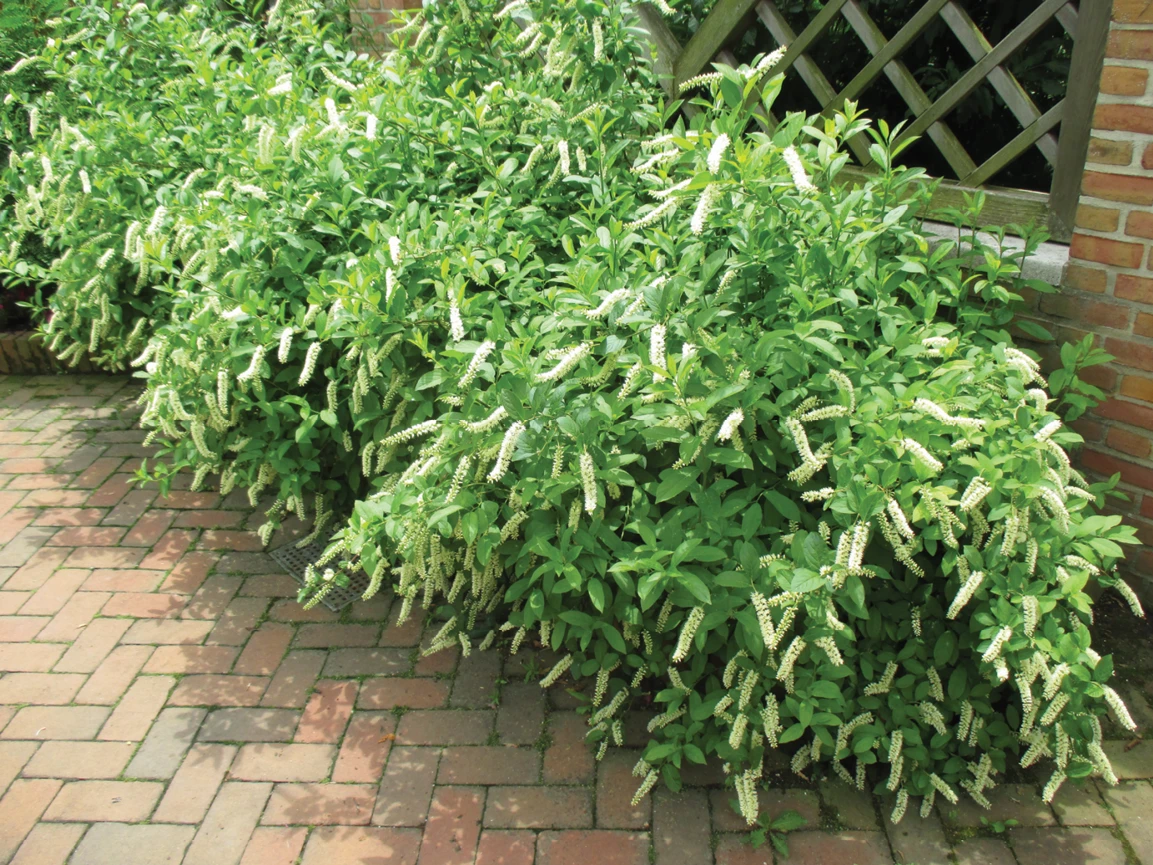
Photos by Mark Dwyer


When considering shrubs for the landscape, how many selections will “tick the boxes” for summer blooming, fragrant, shade tolerant, adapted to wet soils AND great fall color? Not many shrubs fit the bill although Virginia sweetspire (Itea virginica) certainly has all of those features. More specifically, the sweetspire selection Scarlet Beauty (‘Morton’) has impressed me over the last 10 years I’ve been growing it. In the Midwest, I’ve had mixed success with other selections of Itea (pronounced eye-TEE-ah) in terms of hardiness (most listed to Zone 5) and also leaf chlorosis due to alkaline soils. My sweetspire plantings were dismal and struggled until I embraced Scarlet Beauty. This selection was discovered and selected by Kris Bachtell of the Morton Arboretum (Lisle, Illinois) back in 1999 but had thrived in their collections since the mid-1950s.
Virginia sweetspire is native to swamps and freshwater shorelines in the southeastern U.S. so adequate moisture is a must. With superior hardiness and a higher pH tolerance than other cultivars of the species, Scarlet Beauty (‘Morton’) reaches roughly 4 feet tall and wide and features fragrant white flowers, borne on cascading, 3-inch-long inflorescences from mid-June until early July. Bees and butterflies appreciate the flowers. This slowly suckering shrub prefers part shade but is fine in full sun with ample moisture. The glossy, clean, medium-green foliage turns an amazing orange-red to red-purple in autumn and provides a notably lengthy contribution of extended fall color until hard frost. Although this plant prefers acidic soils, the lack of leaf chlorosis with Scarlet Beauty in more alkaline soils is meritorious. The stems are a nice red in winter and this species is also deer resistant.
Scarlet Beauty was released in 2011 and is a Chicagoland Grows introduction, which is a program jointly managed by the Chicago Botanic Garden, the Morton Arboretum and the Ornamental Growers Association of Northern Illinois. While Virginia sweetspire and other excellent varieties might grow well for some locations, Scarlet Beauty has broad applicability and the substantial hardiness and high pH tolerance making this a desirable consideration in the landscape.

Explore the September 2024 Issue
Check out more from this issue and find your next story to read.
Latest from Nursery Management
- John Ruter shares UGA's latest woody and herbaceous ornamental plant breeding projects
- Conor Foy joins EHR's national sales team
- Pantone announces its 2026 Color of the Year
- Syngenta granted federal registration for Trefinti nematicide/fungicide in ornamental market
- Get to know Kayela Aeppli
- HILA 2025 video highlights: John Gaydos of Proven Winners
- Q&A with Justin Bartlett
- Be the best choice





